I'm wondering how I union two DFA's, when one has an error state. Specifically, the first DFA is this:

The second one doesn't really matter, but it doesn't need an error state in that at every state it takes either an 'a' or a 'b'. So I can use product construction just fine up to when I get to state q3. Let's say the machine is at (q3,z) (where z is a random state from the second DFA) and then reads an a. The second can go on happily, but the first DFA should go to an error state and not accept any more input. Because this is union and not intersection of course, I need to keep simulating the second to see if it reaches an error state.
How can I show this when constructing a union-ed DFA?